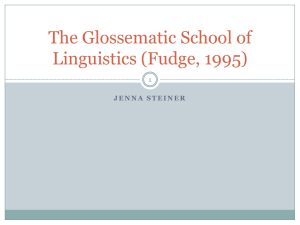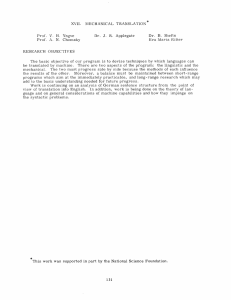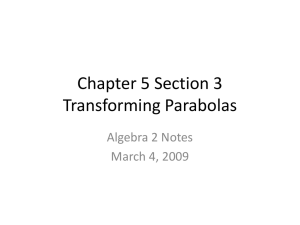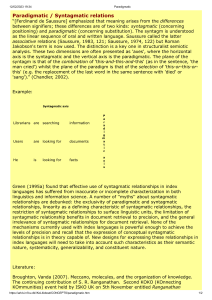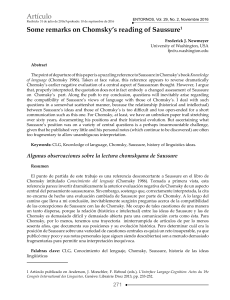Lesson 2 Linguistics and translation De Saussure http://en.wikipedia
advertisement
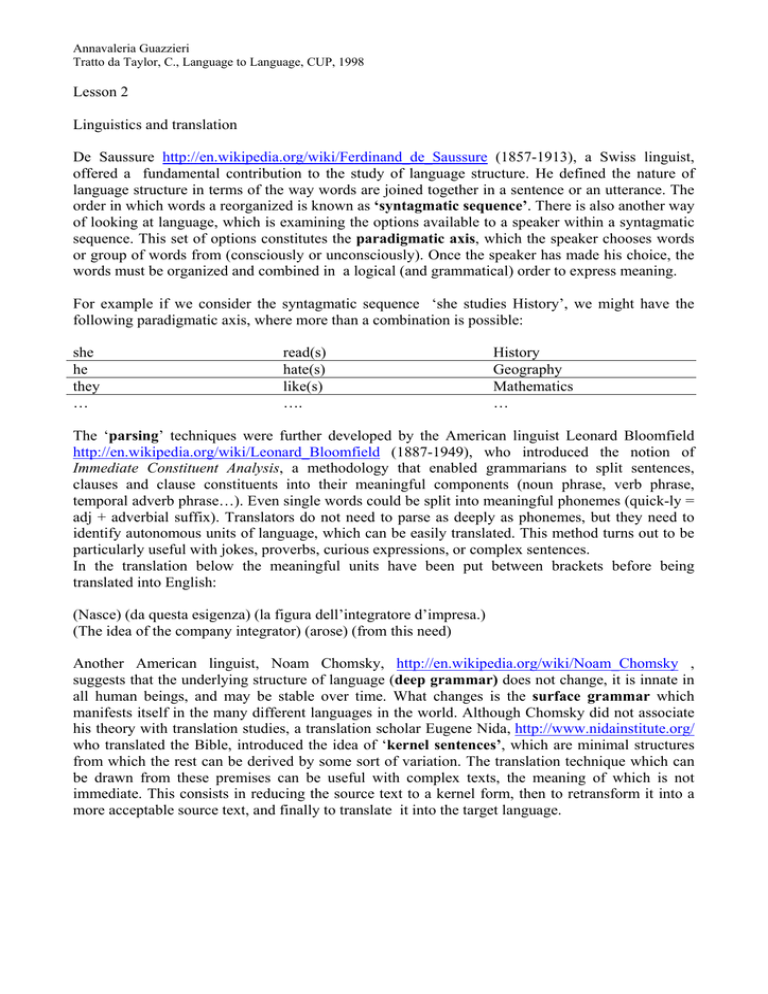
Annavaleria Guazzieri Tratto da Taylor, C., Language to Language, CUP, 1998 Lesson 2 Linguistics and translation De Saussure http://en.wikipedia.org/wiki/Ferdinand_de_Saussure (1857-1913), a Swiss linguist, offered a fundamental contribution to the study of language structure. He defined the nature of language structure in terms of the way words are joined together in a sentence or an utterance. The order in which words a reorganized is known as ‘syntagmatic sequence’. There is also another way of looking at language, which is examining the options available to a speaker within a syntagmatic sequence. This set of options constitutes the paradigmatic axis, which the speaker chooses words or group of words from (consciously or unconsciously). Once the speaker has made his choice, the words must be organized and combined in a logical (and grammatical) order to express meaning. For example if we consider the syntagmatic sequence ‘she studies History’, we might have the following paradigmatic axis, where more than a combination is possible: she he they … read(s) hate(s) like(s) …. History Geography Mathematics … The ‘parsing’ techniques were further developed by the American linguist Leonard Bloomfield http://en.wikipedia.org/wiki/Leonard_Bloomfield (1887-1949), who introduced the notion of Immediate Constituent Analysis, a methodology that enabled grammarians to split sentences, clauses and clause constituents into their meaningful components (noun phrase, verb phrase, temporal adverb phrase…). Even single words could be split into meaningful phonemes (quick-ly = adj + adverbial suffix). Translators do not need to parse as deeply as phonemes, but they need to identify autonomous units of language, which can be easily translated. This method turns out to be particularly useful with jokes, proverbs, curious expressions, or complex sentences. In the translation below the meaningful units have been put between brackets before being translated into English: (Nasce) (da questa esigenza) (la figura dell’integratore d’impresa.) (The idea of the company integrator) (arose) (from this need) Another American linguist, Noam Chomsky, http://en.wikipedia.org/wiki/Noam_Chomsky , suggests that the underlying structure of language (deep grammar) does not change, it is innate in all human beings, and may be stable over time. What changes is the surface grammar which manifests itself in the many different languages in the world. Although Chomsky did not associate his theory with translation studies, a translation scholar Eugene Nida, http://www.nidainstitute.org/ who translated the Bible, introduced the idea of ‘kernel sentences’, which are minimal structures from which the rest can be derived by some sort of variation. The translation technique which can be drawn from these premises can be useful with complex texts, the meaning of which is not immediate. This consists in reducing the source text to a kernel form, then to retransform it into a more acceptable source text, and finally to translate it into the target language.

